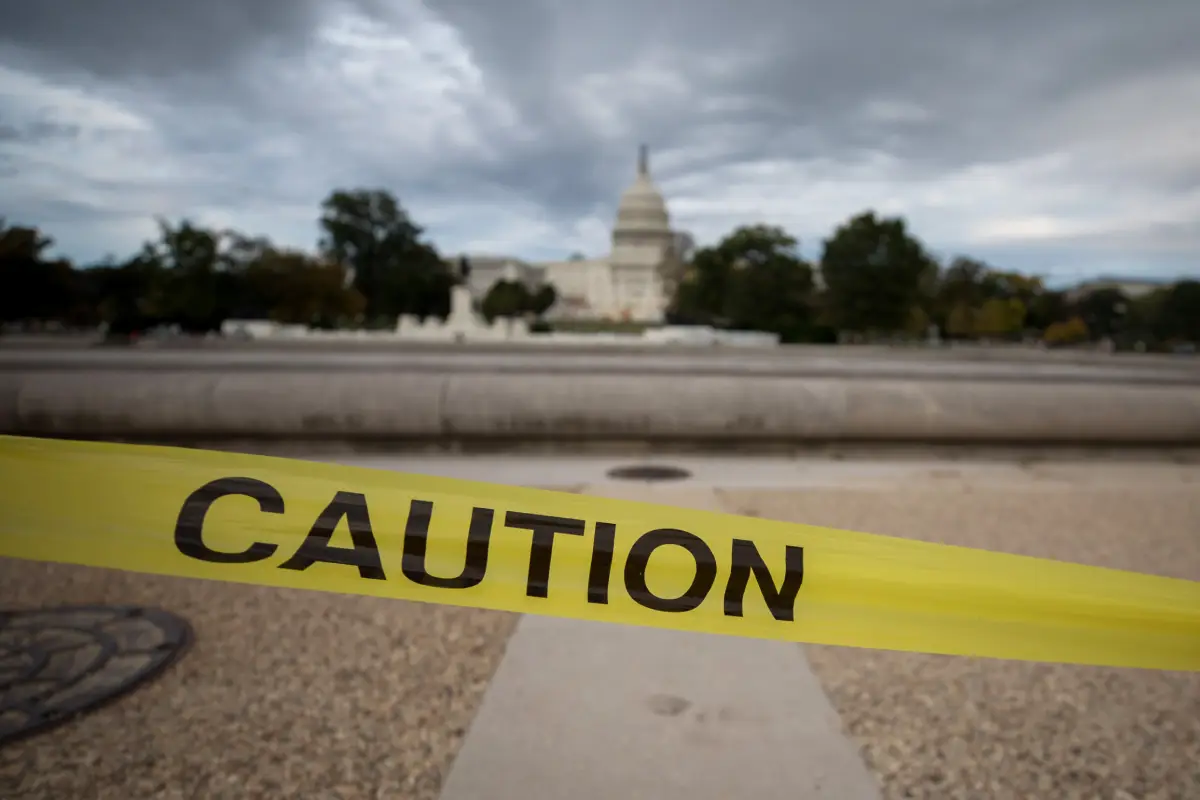What began as another budget showdown in Washington has now turned into one of the longest federal shutdowns in U.S. history — and there’s still no sign of a deal. Four weeks in, lawmakers are no closer to reopening the government, and prediction markets are starting to price in a grim reality: this standoff could drag well into November, maybe even Thanksgiving.
Kalshi’s current forecast project that the shutdown will last 40.5 days.
The shutdown officially began at 12:01 a.m. on Oct. 1, 2025, when Congress failed to agree on an appropriations package to fund the government. Since then, roughly 1.3 million federal workers have either been furloughed or forced to work without pay. Departments ranging from the Interior to Transportation are struggling to maintain essential operations, and agencies like the National Nuclear Security Administration have confirmed furloughs affecting up to 80% of their staff.
Economic tolls of a shutdown
The economic toll is mounting. The Treasury Department estimates the shutdown is costing as much as $15 billion per week in lost output. Small businesses that rely on federal contracts are running out of cash, air traffic controller shortages are fueling major delays at New York and Chicago airports, and the CDC has been forced to scale back a key infectious-disease conference as travel funds dry up. “We’re trying to keep the lights on,” one agency official told Politico, “but each day that passes makes that harder to do.”
And yet, even as the impact deepens, the political trench warfare continues. House Republicans remain divided over whether to pursue a short-term funding patch or a long stopgap measure that could extend into early 2026. Democrats, led by Senate Majority Leader Chuck Schumer, insist they won’t negotiate without guarantees on key health care subsidies and climate provisions — conditions the White House supports.
The result is stalemate. A vote to end the shutdown failed in the Senate on Monday, marking another dead end for negotiators and fueling frustration from both parties. President Donald Trump, meanwhile, is reportedly looking for ways to pay air traffic controllers and other critical staff without reopening the government — a move some economists warn could backfire by undercutting bargaining leverage.
Polling shows Americans are growing weary. A Politico — Morning Consult survey released this week found that 89% of voters view the shutdown as a problem, and more than half blame Republicans in Congress. Yet, paradoxically, Trump’s approval rating has inched up, according to Reuters, suggesting that while voters dislike the shutdown, they’re not uniformly punishing the GOP’s leader for it.
Gov’t shutdown odds and what would change them
Markets are less forgiving. On Polymarket, traders are betting roughly 55—60% odds that the shutdown will stretch into mid-November. Another 30% believe it could last beyond that — potentially setting a record for duration. Those figures reflect a larger sentiment in Washington: no one expects a breakthrough soon.
So what could change the odds? The most likely triggers are external — a public backlash sharp enough to scare lawmakers, or an economic shock large enough to threaten the broader recovery. Short of that, insiders expect the political calculus to hold: Democrats will demand concessions, Republicans will stall, and millions of federal employees will stay caught in the crossfire.
At this point, prediction markets and analysts alike see only a one-in-five chance that the government reopens within the next two weeks. The odds favor endurance over compromise.
For now, the headline writes itself: no end in sight, no deal on the horizon, and no one willing to blink first. In the nation’s capital, gridlock has rarely felt this expensive.

























